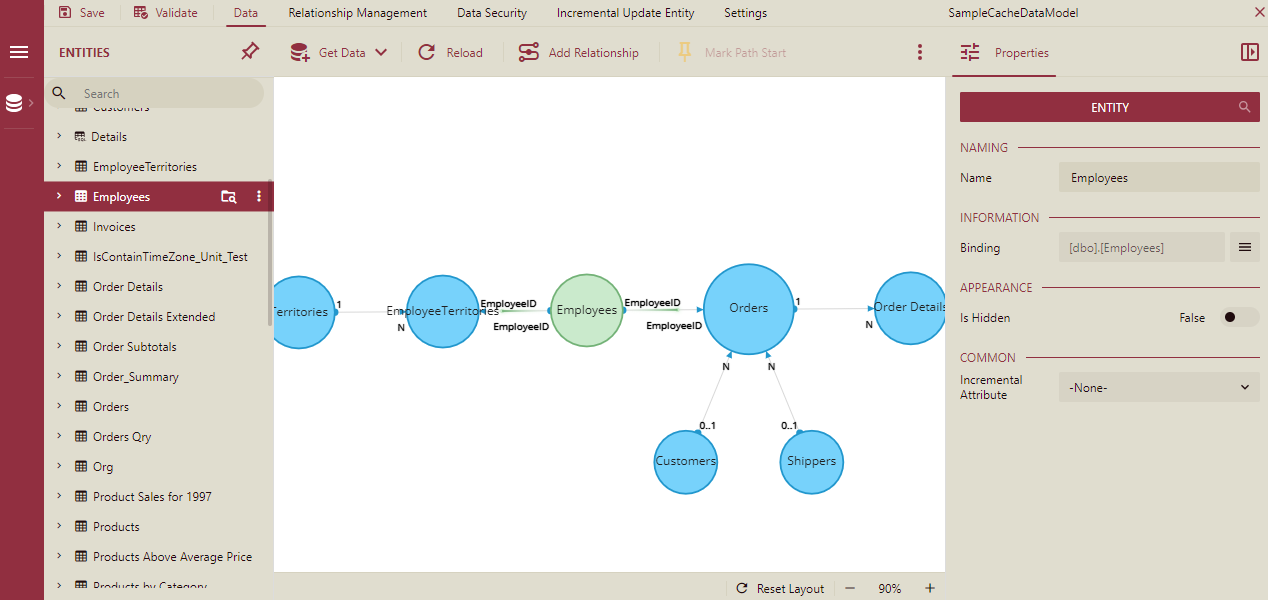- Getting Started
- Administration Guide
-
User Guide
- An Introduction to Wyn Enterprise
- Document Portal for End Users
- Data Governance and Modeling
- Working with Resources
- Working with Reports
- Working with Dashboards
- View and Manage Documents
- Understanding Wyn Analytical Expressions
- Section 508 Compliance
- Subscribe to RSS Feed for Wyn Builds Site
- Developer Guide
Wyn Enterprise: Introduction to Cached Model
A data model that supports cache mode and data extraction from multiple data sources, is referred to as a Cached Model. At the same time, it also lets you configure the refresh data strategy for each entity based on business requirements.
In the Cached Model, the data tables in the databases and the relationships between the data tables are represented in a flat diagram, wherein data tables are represented by a circle and relationships are represented by arrows. The direction of the arrows represents the relationship cardinality between the source and target entities.
Typically, a Cached Model is based on three concepts - entities, attributes, and relationships, where entities represent the data tables in the database, attributes represent the data columns, and relationships represent the link between the data tables.
Benefits of Cached Model
Following are a few benefits of using a Cached Model:
Improves data query performance and interaction speed.
Best suitable for less frequent data. For example, configuration data, product details, staff information, etc.
Supports data queries across multiple data sources. For example, data deployed in different types of databases like Oracle, SQL Server, MySQL, Postgres, etc. can be unified in one data model.
Cached Model Designer
The below image illustrates the Cached Model Designer.

The Entities panel on the left of the designer lists the data tables in the databases. You can expand the entity to see its associated attributes. The Diagram area in the center shows the entity-relationship diagram for the cached model. The Properties panel on the right displays the properties for the selected entity, attribute, and relationship in the diagram. You can also select the entities and attributes from the Entities panel on the left.
The menu on the top of the designer provides options to add data to the cached model from several data sources, reload the cached model, configure relationships between entities, mark the path start or end, and so on.



